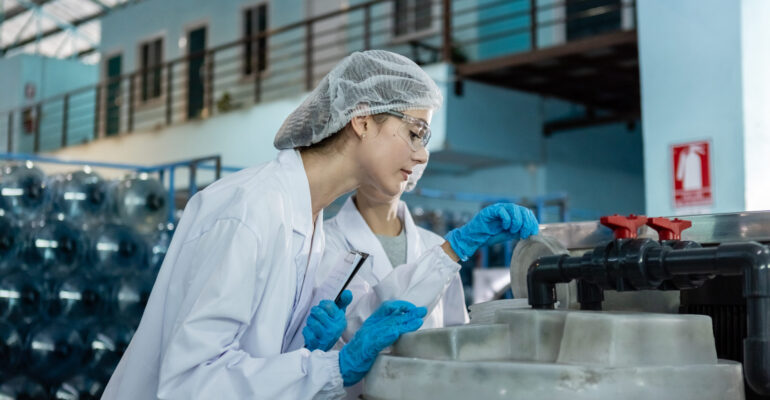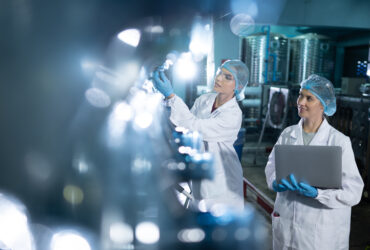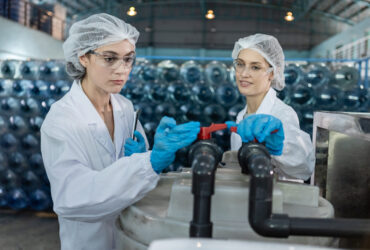24/7 ONLINE SUPPORT
Description for our service

Liquid coating is a versatile finishing process that involves applying a liquid paint or coating material to metal and other surfaces. This method is widely used in various industries to provide protective, functional, and decorative finishes. At Kaveri Steel Fabs, we offer high-quality liquid coating services tailored to meet the diverse needs of our clients. Here’s an in-depth look at the liquid coating process, its advantages, applications, and how we ensure superior quality.
What is Liquid Coating?
Liquid coating refers to the application of liquid paint or other liquid coatings onto surfaces to create a protective and aesthetically pleasing finish. This process can utilize different types of coatings, including water-based, solvent-based, and high-solids formulations, depending on the specific requirements of the project.
The Liquid Coating Process
Surface Preparation
- Proper surface preparation is critical to achieving a durable and high-quality finish. This involves cleaning the surface to remove contaminants such as dirt, grease, rust, and old coatings. Techniques like sandblasting, chemical cleaning, or manual scrubbing may be employed to ensure optimal adhesion of the coating.
Application of Coating
- The liquid coating is applied using various methods, including:
- Spray Application: Using spray guns for an even and efficient application, suitable for large and complex surfaces.
- Roller Application: Ideal for flat surfaces where precision is less critical.
- Dipping: A process where the object is submerged in the coating solution for thorough coverage, often used for smaller parts or components.
- The method selected depends on the shape, size, and type of the object being coated, as well as the desired finish.
- The liquid coating is applied using various methods, including:
Drying and Curing
- After application, the coated item must be dried and cured. Drying time can vary based on the type of coating used, environmental conditions, and thickness of the applied layer. Some coatings may require heat curing to achieve optimal properties, while others may air-dry at ambient temperatures.
Quality Control
- Once the coating has dried, we conduct thorough inspections to ensure it meets our quality standards. This includes checking for uniformity, adhesion, and any defects like bubbles or runs. Any necessary touch-ups or repairs are made before the final product is delivered.
Advantages of Liquid Coating
Versatility: Liquid coatings are available in a wide range of colors, finishes, and textures, providing flexibility for both protective and decorative applications. This versatility allows businesses to customize their products to meet specific aesthetic or functional needs.
Good Coverage and Detail: Liquid coatings can easily reach intricate shapes and corners, ensuring comprehensive coverage. This capability is particularly beneficial for complex components with various geometries.
Excellent Adhesion and Bonding: When applied correctly, liquid coatings create a strong bond with the substrate, enhancing the durability and lifespan of the finish. Proper surface preparation and application techniques contribute to this adhesion.
Wide Range of Formulations: Liquid coatings come in various formulations, including water-based, solvent-based, and specialty coatings that provide specific properties such as corrosion resistance, UV protection, or chemical resistance.
Cost-Effective: Liquid coating processes can be more cost-effective for certain applications compared to other finishing methods. The ability to achieve a high-quality finish in a shorter time can result in reduced labor and material costs.
Applications of Liquid Coating
Liquid coating is used in a variety of industries and applications, including:
Automotive: Used for painting car bodies, parts, and accessories to enhance appearance and protect against corrosion.
Manufacturing: Coating machinery and tools to improve durability and resistance to wear and tear.
Consumer Products: Applied to appliances, furniture, and sporting equipment for both protection and aesthetics.
Construction: Coating structural components, fixtures, and architectural elements to ensure weather resistance and longevity.
Electronics: Coating metal housings and components to provide protection against environmental factors.
Conclusion
At Kaveri Steel Fabs, we are committed to delivering high-quality liquid coating services that meet the diverse needs of our clients. Our skilled team, advanced equipment, and focus on quality ensure that your products receive the best possible finish, enhancing both appearance and durability.
If you’re interested in learning more about our liquid coating services or have specific project requirements, please contact us today! Let Kaveri Steel Fabs help you achieve the perfect finish for your products.
Quality Industrial Working
At Kaveri Steel Fabs, we prioritize quality in our liquid coating services through:
- Surface Preparation: Thorough cleaning ensures strong adhesion and a smooth finish.
- Coating Materials: We use high-quality coatings for enhanced durability.
- Application Techniques: Skilled technicians apply coatings uniformly using various methods.
- Drying and Curing: Controlled processes ensure maximum hardness and protection.
- Quality Control: Rigorous inspections guarantee that all products meet standards.
- Continuous Improvement: We incorporate client feedback to enhance our services.


Frequently Asked Question
The FAQ (Frequently Asked Questions) section is designed to provide quick answers to common inquiries about our liquid coating services. It aims to clarify details regarding surface compatibility, drying times, customization options, and other relevant topics. This resource enhances customer understanding and supports informed decision-making, ensuring a smoother experience when engaging with our services.




